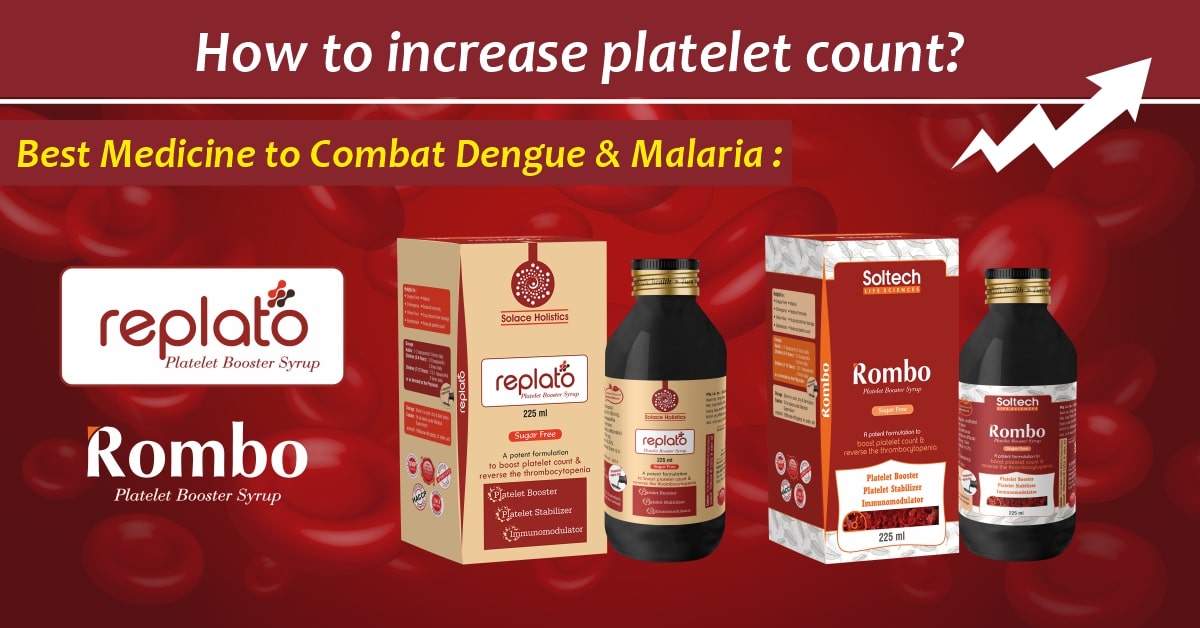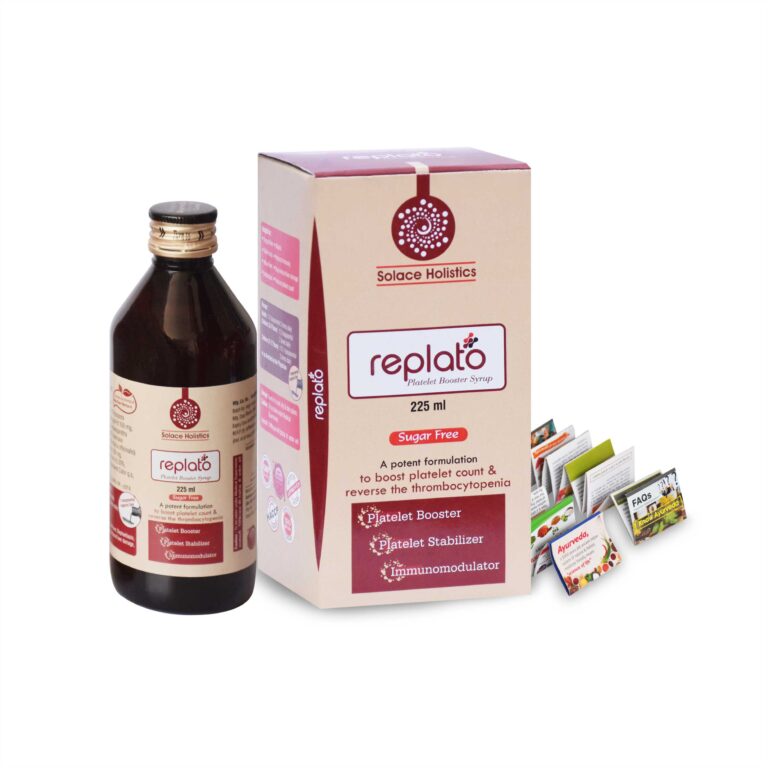
Date Time: 2023-03-19 13:51:46
How to increase platelet count impacted due to Malaria and Dengue infection? is the question everyone is asking and looking to the solutions for the same. There are several sweltering mosquito borne infections. Malaria and dengue are the two common infections caused by mosquitoes which causes distress and mortality for many patients around the world. Concurrent malaria and dengue infection is an important factor that are rarely reported.
Mosquitoes are considered to be an important animal vector that can cause zoonotic diseases to human beings. Mosquito-borne infectious disease is accepted as important sultry infections and is the concentrated topic in tropical medicine. There are many tropical mosquito borne infections.
Generally, Malaria is a protozoan and the pathogen is one of the five human pathogenic species of plasmodium. The mosquito vector here is Anopheles. In contrast, dengue is a viral infection. The virus here is dengue virus. The major mosquito vector is Aedes. Both the two diseases can cause acute febrile illness.
However, malaria is a long term disease while dengue is not a chronic disease. The 3 groups of dengue, atypical lymphocytosis, hemoconcentration and thrombocytopenia may be a hint for differential diagnosis of dengue infection from other tropical infections including malaria.
There is no doubt that in a tropical country, the high presence of malaria and dengue can be seen. Although, malaria and dengue infection is not common. Concurrent malaria and dengue infection is a framework in which both malaria and dengue exist in a patient at the same time.
While the Aedes mosquito (also referred to as ‘daytime feeder’) that is responsible for dengue fever is reported to be more active during the day, the Anopheles mosquito that causes malaria is reported to be active chiefly at night. Therefore, the most vital measure that you can take against these diseases is you can try to avoid mosquito bites during the day and at night. Other preventive measures include:
Malaria is caused by Plasmodium that is transfer through the bite of the female Anopheles mosquito. Typically, the incubation time is 10-15 days after the mosquito bite. Symptoms are: Malaria fever keeps occurring in shorter duration and goes with other symptoms like joint pain, vomiting, sweating, anemia, etc.
Malaria is detected through microscopic visuals of the virus. Dengue, on the other hand, is also passed on by a mosquito bite – the Aedes mosquito. These mosquitoes transfer the disease by biting and spreading the blood of people infected by the Dengue virus, usually in the early morning or at evening time.
And its Incubation time is 4-5 days after getting infected. Symptoms are: Dengue fever strikes the patients suddenly and remains for a long time. It is usually accompanied by a severe headache and bone pain. Dengue can be thoroughly assessed through a chemical process. Antigen-Antibody tests are meant for diagnosing dengue.
There are many published journals on malaria and dengue infection. Reports are from some countries only. Beside this, some portions with high presence of both malaria and dengue like countries in Southeast Asia have never reported any cases of concurrent malaria and dengue infection.
As stated by the report by Carme et al in French Guiana, the determined rate of malaria and dengue infection from altogether febrile patients was equal to 0.99%. Based on this statement, it can assume that there is a high probability of concurrent infection in this setting.
Focusing on the clinical presentations, the common demonstration of malaria and dengue infection include high fever and myalgia. The main Characteristics of concurrent malaria and dengue infections are shown in table.
There is no specific report on the moderation of the nature of prevalence and mortality in co-infection. No report is on the increased severeness of disease compared to each infection. Additionally, there is no direction for any particular required treatment for co-infection.
The combination of separated therapeutic protocols for each infection at the same time can be successful. Concentrating on the species of malaria, any species of malaria can coinduct with dengue.
As we all know Anopheles mosquito causes malaria. However, Dengue is caused by the Aedes mosquito. Also, dengue are mosquito-borne viral infections, whereas a parasite known as Plasmodium gives rise to Malaria.
In this way, the treatment procedures for both the conditions are different.
This is a most common question that is to be clarified. As noted, malaria and dengue are both common infections in tropical countries. However, the infection is not often reported. The explanations for this include:
Blood platelets count are the vital component in the human body known as Thrombocytes that helps in the process of Hemostasis that helps in hindering the blood when blood vessels are ruptured. Platelets grow naturally by taking proper diet in our food. In a study it is found that in a human body 1 µL of blood contains 1,50,000 to 4,50,000 platelets.
Sometimes if the platelet count is slightly low, that does not suggest a disease. If a person has more than 450,000 blood platelets then the condition is known as thrombocytosis. And if having less than 1,50,000 blood platelets then the condition is known as thrombocytopenia. If the platelet count is less while the patient is suffering from dengue, it can be dangerous.
When an infected mosquito bites a person, the dengue virus enters the blood vessels, sticks to platelets and replicates leading to multiplication of infectious virus. The contaminated platelet cells tend to demolish normal platelets which is one of the major causes for the drop in the platelet count in dengue fever.
Platelet irregularities in malaria are both qualitative and quantitative change. In one of the studies it is found that platelet counts were consistently reduced in malaria-infected people. Thrombocytopenia takes place in 84.9% of malaria-infected patients.
Virus causes dengue fever, this is the reason there are no specific antibiotics to treat dengue fever or to increase the platelet count. Antiviral medications are also not designated for dengue fever. For typical dengue, the treatment is implicated with the relief of the symptoms and signs. Home remedies such as rest and fluid intake (oral rehydration) are important.
Only take pain relievers such as aspirins and nonsteroidal anti-inflammatory drugs (NSAIDs) under a doctor’s supervision because of the possibility of worsening bleeding complications. Patients hospitalized for dengue may receive IV fluids.
In several clinical studies, it is seen that Dengue can damage your bone marrow, the platelet-producing centre of the body. The dengue virus can affect your blood cells and damage your platelets. Dengue can generate antibodies that destroy platelets. One ways to cure ourselves from these deadly virus is to keep our immunity as strong as possible, this will result in maintaining the platelet counts in your body. Further to increase platelet count in the body the SOLACE BIOTECH LIMITED provides you with products like Replato and Rombo that are beneficial for maintaining blood platelet level. Details are as follows.
About Replato:

Replato is a Potent formulation to increase platelet count & and reverse the thrombocytopenia.The formulation also acts as a platelet booster, platelet stabilizer, Immunomodulator. It is an Ayurvedic proprietary medicine that contains :
(i) PAPAYA LEAF (Carica Papaya): May increase megakaryocytic production & boosts platelets.
(ii) GILOY/GUDUCHI (Tinospora Cordifolia): Contains strong antipyretic, antiviral & hepatoprotective properties.
(iii) GOAT MILK (Ajadugdha): May boost metabolism and improve immunity.
(iv) PUNARNAVA (Boerhaavia diffusa): Can reduce fatigue and normalize energy levels.
(v) NEEM (Azadirachta indica): Helps to enhance the immunological functions.
(iv) TULSI ( Ocimum sanctum): Contains anti-viral properties to combat dengue fever.
For Personal Use, Check out the links given below:
Rombo is another Potent formulation to increase platelet count & and reverse the thrombocytopenia.The formulation also acts as a platelet booster, platelet stabilizer, Immunomodulator. It is an Ayurvedic proprietary medicine that contains :
(i) PAPAYA LEAF (Carica Papaya): May increase megakaryocytic production & boosts platelets.
(ii) GILOY/GUDUCHI (Tinospora Cordifolia): Contains strong antipyretic, antiviral & hepatoprotective properties.
(iii) GOAT MILK (Ajadugdha): May boost metabolism and improve immunity.
(iv) PUNARNAVA (Boerhaavia diffusa): Can reduce fatigue and normalize energy levels.
(v) NEEM (Azadirachta indica): Helps to enhance the immunological functions.
(iv) TULSI ( Ocimum sanctum): Contains anti-viral properties to combat dengue fever.
So the result giving products to increase platelet count is already mentioned. Contact us for any sort of Business Inquiry through whatsapp number 9355955555, 9215029777 or submitting the requirement through Enquiry Form.
"Submit your query here and let us connect with you"
As a dynamic and forward-thinking company, Solace Biotech Limited combines its extensive experience, commitment to quality, and customer-centric approach to provide a diverse range of pharmaceutical & ayurvedic products that meet the highest standards of excellence.